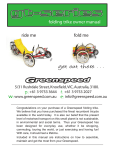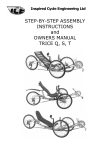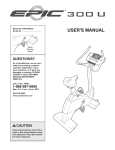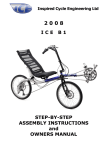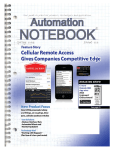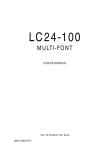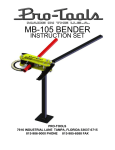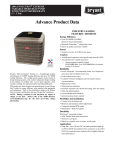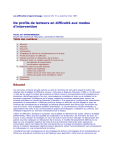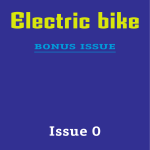Download Anura Owners Manual 11v2.indd
Transcript
manual trike anatomy ����� ���� �������� ��� ���� ��������� ����� �������� ������������ ������ ������ ������ ���������� ������ ���� ���� ���� ����� ����� ���� �������������� �������� ������ ������� ����� ������ ����� ����� ������������� ��� ����� ���������� ��� ����� ������������ ����� ������������� ����� ����������� ���������� ������ ���� ������� ���������� ������� ����� ��������� ������������ ��������� ����������� ����� ���� ���������� ���������� ����� ���� ����� ����� ������ ��� ������� ������ ���������� ������� ����������� ����������������� ���������������� ������������� ���������� ������� ���������� ������ ������ ����� 2 welcome to the family Congratulations on your purchase of a Greenspeed Anura trike. We believe that you have purchased the finest recumbent tricycle available in the world today. It is also our belief that the present level of motorised transport on this small planet is not sustainable, in environmental and social terms. Thus your Greenspeed has been designed for everyday use, whether it be shopping, commuting, touring the world, rehabilitation or just exercising and having fun! With care, it should last a lifetime. Included in this manual are instructions on how to assemble, maintain and get the most from your Anura. contents 2 tricycle anatomy 3 design assembly 4 tools fitting your differential 5 fitting disc brake calipers fitting your frame together 6 fitting your rear wheels fitting your front wheel 7 fitting your seat adjusting your seat angle adjusting your handle bars 8 fitting your pedals adjusting to your leg length check derailleur cables 9 fitting your chain adjusting chain length joining your chain 10 attaching the steering rod aligning your steering 11 attaching the front brake final check 12 adjusting your gears ~ front derailleur ~ rear derailleur design The Anura is designed to be enjoyable to ride. The high seat with one wheel at the front & two rear, make it easy to mount & dismount. The high seat also gives a good view in traffic. The ergonomic placement of the handlebars, and the attention paid to the steering geometry means that it is effortless to steer. The three wheel disc brakes give very powerful braking. The combination of the Schlumpf speed drive & nine speed bar shifter allows two speed shifting while stationary or under way and easy shifting while riding. The differential gives a balanced drive to both rear wheels which enables it to turn easily in both directions, and track in a straight line up steep hills. Finally, at the end of your trip, the trike will go through a standard doorway and park vertically, taking up little space. A boss welded through the rear axle brace provides an attachment point for attaching a trailer or another Anura with special hitches available from your Greenspeed Dealer. riding 13 steering, braking, using your gears 14 1st ride, stamina, pedals tools to have while riding maintenance, chain, tyre pressure w h a t ’s n e x t 15 accessories, warranty, community, resources 3 assembly in place. Undo the collar and slide it off the axle, thread the axle through the bearing just far enough to sit the collar (step towards bearing) onto the splined part of the axle (fig 2a). In the majority of cases your dealer will have fully assembled, test ridden and adjusted your Anura for you. However, having an understanding of how your Anura goes together is important and also gives you more confidence making future adjustments. If you are assembling from a boxed state, you start by unpacking it all carefully. Once all the packaging has been removed, the fun bit begins. tools Here are the tools you will need for the job. Note: The two axle collars have a step on one side of the collar. Orientate the step so that it sits up against the bearing. This way the collar will not rub against the stationary part of the bearing. Now we assemble the diff parts together (fig 2b). Check the big collar (x) is sitting on the left hand (fatter) side of the diff, and the black cluster spacer (y) is on the x right hand side, pressed onto the axle receiver. fig 1 fig 2b 10 Wrenches 15 4 8 6 y 2 5 Allen keys fitting your differential The differential (diff) is a very simple set up; collars holds each of the the two axles in place in the frame with the diff unit in the center with a 3rd collar holding that in the correct place. Now you can fit the cluster on by sliding the freebody into the diff and placing the cluster spacer (z) inside it. z fig 2c fig 2a First we’ll sit the right hand axle (the longer of the two) loosely Now holding your diff/cluster assembly into position, slide the RH axle into the diff’s axle receiver (fig 2c). You need to slide the axle right in until the rotor mount is pressing up against the outer bearing. Then slide the collar up against the inside bearing and lock it in place with the grub screw. 4 fitting your frame together fig 2d Mate the front section (with the forks & cranks) to the rear section (with the triangle shape welded into it). fig 4 Now slide your Left hand axle through the two frame bearings, the collar (step towards the bearing), and into the diff. Push it all the way in until the rotor receiver butts up against the outer bearing. Then slide the collar against the bearing and lock it in place with the grub screw. fitting your disc brake calipers Next install your calipers onto the frame. Slide the calipers onto the disc brake rotor and use the screws and washers to tighten them into place (fig 3a and b). Anura has been designed to take one washer between the frame mount and caliper bracket, however in some cases an extra spacer may be needed (fig 3b). a screw b 6 Last step is slide the diff’s large collar again the Left hand axle’s collar and lock this into position with the grub screw. fig 3 a b Loosen the screws (fig 4a). Take care not to disturb the shims inside the rear section when sliding the front section into the rear. Starting on an angle (fig 4b) makes things a little easier. c d 6 Slide the front section about ½ way in & tighten the two ALLEN screws to hold it in place during assembly (fig 4c and d). frame mount washer spacer (if needed) 5 caliper bracket 5 fitting your rear wheels Now install the rear wheels. Fig 5 shows that there are left and right wheels. They can be identified by looking at the top of the hub and following the outside spoke (that is the straight part of the spoke is on the outside of the hub’s flange) to the left or right. Be sure to try and install them this way in the future to increase spoke life. fig 5 left wheel right wheel Left hand wheel Right hand wheel Outside spoke points to the left fig 6 Outside spoke points to the right a b c d 6 Remove the axle screw (some models also have a cap here) from the end of the axle. Face the hub’s retaining pins inwards towards the rotor (fig 6a circle) and slide the wheel onto the axle (fig 6b). Engage the pins or Allen screw heads in the holes in the disc mounting plate (fig 6c), and then put the axle screw (and cap if you have them) back in and tighten it. Note: It may be necessary to try different positions in fitting the pins into the disc plate, to get them to mate properly and go all the way in. fitting your front wheel Now fit the skewer to the axle of the front wheel if it is not already fitted. fig 7 a Unscrew the nut & slide it through the axle from the opposite side to the disc, then screw the nut on until the end of the nut is flush with the end of the skewer. Then fit the front wheel by b carefully sliding the disc into the brake caliper, and the axle into the dropouts (fig 7a). Tighten the skewer nut finger tight with the quick release lever straight out (fig 7b). Then turn the lever back to c lock the front wheel in place (fig 7c). This should feel firm. If the lever is not locked firmly, release it and tighten the nut some more until it locks firmly into place. Inflate the tyres to say 70 psi. 6 fitting your seat fig 8 adjusting your seat angle a b 6 Take out the two allen key screws from the frame (fig 8a) and use them attach the seat (fig 8b), do them just snug for now, we will tighten them later. Use the lower holes in the tag. 4 10 c 6 d Then fit the rear seat stays with the Allen screws & nuts (fig 8c). If your seat angle looks okay, tighten the frame screws (fig 8d). To adjust the angle of your seat, fig 9 loosen the two frame screws one turn (fig 8d), and loosen both of the seat brace’s clamps (fig 9). Now you can slide the seat angle fore and aft to your desired angle. Then tighten the clamps back up again. 3 Note: Make sure you have at least 2” (54mm) of the upper tubes into the lower tubes. adjusting your handle bars fig 10 4 Loosen the clamp on the handlebars and adjust them to a comfortable position making sure both bars are parallel. Making further adjustments to the bars later on as you tune them for comfort will not effect your steering. Note: your handle bars need to be done up fairly tight to prevent unnecessary movement. Some movement under duress is acceptable in case of an accident, but they should NOT be used for leverage in getting on or off, or in pedaling. 7 fitting your pedals Fit the pedals by lightly greasing the threads and screwing them in. to tighten 15 Fit the shifting plates under the pedals if desired (schlumpf option only). If you think you will change the leg length regularly, then you should consider fitting the trike up with a Chain Gobbler. This means that you will not need to shorten and lengthen the chain. check derailleur cables The right hand pedal has a right hand thread which tightens fig 11 clockwise, and the left hand one has a left hand thread which tightens anti-clockwise. Please make sure that they are tight. fig 13 a b 5 adjusting to your leg length Sit on the trike to check your leg length. Get comfortable in the seat and with your leg and the pedal fully extended your heel should just touch the pedal (fig 12). If this is NOT the case, loosen the clamping screws on the rear frame & move the front frame in or out until this is the case. Make sure to check under the frame’s front section to make sure that you have not exceeded the max point. Your rear derailleur should be in place on the frame so all you need to do is tighten the cable clasp on the derailleur is tight with a 5mm Allen Key (fig 13a). Check the outer casing is sitting properly in the shifter and derailleur adjuster and the shifter is in the forward position and pulls the inner cable tight. Your front derailleur is similar but the cable has been removed. Put the outer cable into all the stops, move the lever forward and then clamp the cable in position in the front derailleur (fig 13b). fig 12 Note: Once you ride the trike you may want to adjust this position some more until it feels right for you. 8 fitting your chain Fit your chain next following fig 14. Start by feeding the chain through the front derailleur cage, down the chain tube, under the pulley, over the sprockets and down through the rear derailleur (fig 14, step1). Put the rest through the lower tube (fig 14, step2). joining your chain with split links fig 16 a Use the two joining links to join your chain together. ��� fig 14 Slot each link into the chain ends so that they are opposite each other (fig 16a) ... b ��� Note: Make sure the chain is not twisted inside the tubes. ...and slot the pins through the links (fig 16b) and keep pushing them towards each other as you slide them into position (fig 16b arrows). adjusting the chain length The chain should only be adjusted once the front frame has been set for fig 15 the right leg length. If you have chain rings, move the chain to the largest ring on the cranks (no need to do this for a single ring Schlumpf drive). At the back, put the chain to the smallest sprocket (right hand gear shifter all the way forward) and see if the rear derailleur cage matches the position cogs here in (fig 15). Shorten the chain until the two derailleur cogs are in alignment. If you do not have a chain tool, you may need to see your dealer. Warning: if this chain length is not correct, damage may occur to your rear derailleur. When ever you do or undo the links, always push them together first so that the head of the pins go over the retaining teeth (represented here in fig 16c by the black arrows). c 90º 9 attaching the steering rod Then fit the steering rod on to the handle bars (fig 17a) and to the front forks (fig 17b) with an Allen key screw through the rod end at each end. The rubber o-ring goes between the rod end and the front fork to keep the steering silent. Generally the thicker section with the bend goes to the rear of the trike with the bend inwards bringing the rod closer to the trike. However the steering rod may be fitted either way with the bent end either bolted to the handle bars, or the front forks. Some models may need to use the bend at the front end of the trike to give extra clearance with the cranks. The bend will always face inwards, bringing the steering rod closer to the frame. fig 17 a b 5 Sitting on trike you can then hold the handle bars so that they are evenly by your side, and push the front wheel Another technique we are fond of is to push the front wheel so that it points hard right so that steering rod just touches the frame. Turn your handle bars hard right until they hit the stop. With the front wheel and bars both hard right, tighten up the clamp. b 90º Depending on the steering rod inclination and design this may not always work, but if you are changing lengths regularly, it is great to check if it will work for you. Note: be careful not to over tighten the clamp. If you get the feeling that you steering alignment is changing whilst riding, check first the leg length scale under the frame to see if it has moved. More likely you need to tighten your frame clamp bolts as the frame is sliding together from the pressure of the chain, rather than the steering. aligning your steering Loosen the clamp on the rod (fig 18a) so that it can slide telescopically. with your feet until it is in alighnment with the frame. You should end up with the wheel 90 degree to the handlebars (fig 18b). fig 18 a 3 10 attaching your front brake fig 19 a b Start by twisting the barrel screw and locking ring around so the slots line up. Squeeze the brake lever to open it up and place the head of the cable into the lever cradle. c d Place the black outer cable into the barrel screw and close the slot by twisting the barrel screw and locking of the locking ring, hand tight only. e If you have cable issues with the cable fixed to the frame, you can cut that tie and instead attach it to the steering rod. Place two zip ties onto the steering rod as shown. final check Check all screws & nuts to make sure they are tight. Check the brakes & steering to make sure they work OK 11 adjusting your gears Now for the fun of gear adjustment. Your trike has also been supplied with the component manufacturers instructions for your reference. Set your trike so the rear wheel is off the ground and can spin freely, and is stable enough that you can turn the cranks. ~ front derailleur We will start with the front fig 20 derailleur, as it is easier to adjust, and gives you a good start for the rear. Firstly L determine the problem you are H having, is it A) will not go into the large chain ring or B) will not go into the smallest chain ring? A: The cable needs more tension, or if you’ve been riding for a while, may have stretched. Check this by returning the chain to the smallest chain ring (shifter all the way forward) and feeling the cable between the cable stop and the derailleur, is it excessively slack? If so undo the cable pinch bolt and pull through the excess cable and tighten the pinch bolt. Try shifting to the large chain ring again. If it still doesn’t work turn the ‘H’ limit screw (small screws on top of the derailleur shown in fig 20 H) out by a quarter of a turn each time and retry the shift. If you unscrew it too far, the chain will fall off the outer side. B: Loosen off the ‘L’ limit screw (fig 20 L) slowly and it should drop down, if not the cable may be too tight. To check this, undo the cable pinch bolt, loosen the limit screw again until it drops down and reattach the cable. Double check that it still goes into the large chain ring. Also check the cable to see if it is still running smooth by undoing the pinch bolt, holding the cable in + one hand and shifting with the other hand. Lubricate or replace the cable if it is hard or rough to pull through. If neither of these things work, your derailleur could be worn or misaligned. See your dealer for further assistance. ~ rear derailleur The rear derailleur is similar fig 21 in that if it won’t go into the larger sprockets, there is not enough cable tension, or into the smaller sprockets if there H is not enough cable slack. L Turn the barrel screw (fig 21 AB) in for slack and out for tension. As with the front AB derailleur, use the limit screws only as a last resort, as these don’t effect the indexing of your gears. Loosen the ‘H’ screw (fig 21 H) if it won’t go into the smallest sprocket or tighten if it goes between the smallest sprocket and the dropout. Loosen the ‘L’ screw (fig 21 L) if it won’t go into the largest sprocket or tighten it so that the derailleur doesn’t go into the spokes (not too good if this happens). If you run out of adjustment with the barrel screw you will need to wind it all the way back in, put the shifter all the way forward and loosen the pinch bolt and pull through the excess cable and tighten the pinch bolt again. Also check the cable to see if it is still running smoothly by undoing the pinch bolt, holding the cable in one hand and shifting with the other hand. Lubricate or replace the cable if it is hard or rough to pull through. If neither of these things works, your derailleur could be worn or your derailleur hanger misaligned (bent through an accident). Contact you dealer for further assistance. 12 + riding both levers are fitted with locking buttons. Just squeeze the lever and press the button to stop the trike from rolling away. using your gears steering With its higher seat & narrower width than our “tadpole” (two front. one rear wheel) tricycles, the ANURA is not as stable, and care should be taken in cornering so as not to tip it over. We recommend that you experiment in riding it in an empty car park to see how quickly you can turn without tipping it right over. Please wear gloves for safety while doing this. Leaning into the turns will enable you to turn quicker without tipping. Note that once one of the rear wheels lifts off the road, the drive (pedalling) will be lost until two wheels contact the road again. fig 22 Left hand turn braking riding in a straight line Right hand turn The three wheel disc brakes fitted are very powerful so they should be used carefully. The right hand lever operates the two rear brakes, and the left hand lever operates the front brake. For gentle braking, like slowing for a corner, either lever may be used, as this will allow the other hand to be used for signaling. For most braking it is best to get into the habit of using both hands, as both are required for emergency braking. Please be careful braking in a turn, especially going downhill, as the trike is more likely to tip under those conditions. Once you have stopped, Your trike’s gears match your efforts to the conditions, making it easier and more enjoyable to ride. The low gears make it easier to pedal uphill without having to push too hard, and the higher gears enable you to go faster downhill and with the wind, without having to pedal too fast. Anura is set up with gears at the back controlled by gear shifter (generally on the right), pulling this lever back will move the chain to the large cogs, at the rear of the trike giving you a lower gear & making the trike easier to push. Pushing the lever forward moves the chain to the smaller cogs, so you can go faster. Gears at the front, are either chain rings on your cranks, or the Schlumpf Drive cranks. If your Anura has two shifting levers on top of the bars, the left hand one will change your 3 chain rings on the cranks. Pushing the lever forward gives you easier, lower gears and pulling it back towards you get you into the higher, faster gears. Note: The chain will only change cogs while you are pedaling, so it is a good idea to move a lower gear before you stop, so you will have a low gear when you next start off again. The Schlumpf drive has two speeds which can be changed at rest, or in motion. You change it by kicking the side of the crank with your heel, with your foot on the pedal (even if you use clipless pedals). Push the left crank in, it is in direct drive or low gear. Push the right hand crank in, it is in high gear. Generally you will push the left hand crank in before starting off or as you are coming up to hill, and then if when riding you find yourself having to pedal too fast even with the right hand gear lever all the way forward, kick the right hand crank in. Note: NEVER try to change the rear gears when the trike is rolling backwards, as this may damage the derailleur! 13 1st ride The first ride is where you may notice yourself having a hard time keeping a straight line at speed. Try relaxing your grip on the handlebars, remember it is not a bike you are riding, so let that killer grip off a bit. Try avoiding pulling on the handlebars as well, you are riding a recumbent now, the seat provides a place to exert all your energy. Remember push into the seat, do not pull on the handlebars. If the problem persists, try riding using only one hand to steer, as this will stop you pulling unnecessarily on the handlebars. stamina With the seat behind you, you can exert a much greater force with your legs, so beware of over exertion until you build up your leg muscles. Non-recumbent riders seem to use their arms when standing on the pedals, so recumbent riders develop larger leg muscles. After about a month of riding you should find that you are quicker overall than say a mountain bike rider of the same fitness, despite any extra weight of the trike. Also if you ride together you should find you are less tired at the end of a day’s riding. The difference will be most noticeable against a head wind on level roads. pedals Greenspeed highly recommend the use of ‘clipless’ pedal systems, as they provide a safer attachment to your trike and help to reduce leg fatigue. Remember you are on a trike now, so you can crank the tension up on those adjusters, as you only have to dismount at the end of your journey instead of at every set of traffic lights. tools to have while riding We recommend carrying at least the following tools when riding. 1. Full set of allen keys to suit your trike. 2. A Puncture kit / Spare tube. 3. A Pump Check with your dealer for products they recommend specific to your area. If you aren’t confident changing tyres or making other adjustments, most dealers also run courses at different levels to help you get more confident in road-side repair and maintenance. maintenance Your dealer is the best person to suggest a maintenance schedule specific to your area and the style of riding you use your trike for. Below we’ve covered the bare minimum for you. Any one proficient in bicycle mechanics that are used to looking after their own bikes will be comfortable looking after a trike as well, there is only steering to add to your skills. chain The chain should be kept lubricated with a chain lube that suits your particular climate/conditions (Greenspeed recommends Prolink, www.progoldmfr.com); your local bike shop should know the ideal lube for your particular requirements. If the chain ever becomes dry and squeaks, it is crying out for lube, and will make the trike harder to push! tyre pressure Try experimenting with pressures, lower tyre pressure will give a more comfortable ride and higher speed on rough roads, but higher tyre pressure will make it roll easier on smooth roads. There is usually a good compromise at between 70-80psi. Check your tyre pressure before each ride and you will find that your trike will be easier to push. 14 what’s next? warranty Click onto www.greenspeedrecumbents.com and fill out a warranty form. accessories Accessories can expand the usefulness of your trike and therefore your horizons. We’ve listed some of the more popular ones below but do check out the website for the full range. You can also see our list of recommended products from other manufacturers. We have fully tested these products and believe they are the best on the market for both their designed purpose and suitability to our trikes. community Join us on our Greenspeed facebook. All the latest new and photos direct from the factory and shows are presented there before getting polished up for the website. Find a recumbent riders group, or cycling group in your area. Your dealer is likely the best place to start but also check out ‘bentrider Online and the Recumbent Journal. Take a BIG ride! There are hundreds of fully supported rides that will carry all your gear for you and offer many great services and entertainment along the way. It is a great way to meet people doing what you love. Come tell us your stories and share them with everyone on the Greenspeed website. We love to hear how you are using your trike and how it has enhanced your life. GT Rack & Mudguards Tandem Coupling resources Print VeloVision Recumbent and Tandem Rider Magazine Web Official Website Greenspeed on facebook ‘BentRider Online Recumbent Journal Chain Gobbler Wheel Motor www.greenspeedrecumbents.com company listing www.bentrideronline.com www.recumbentjournal.com Photo credits ~ Jaime Ibarra, lifestyle photos of Christine and Paul. ~ Ian and Mick Sims, studio and product photos. 15 manual ���������������������������� ����������������1 ��������� 16


















